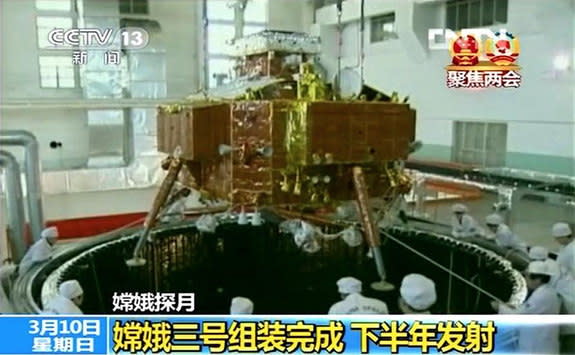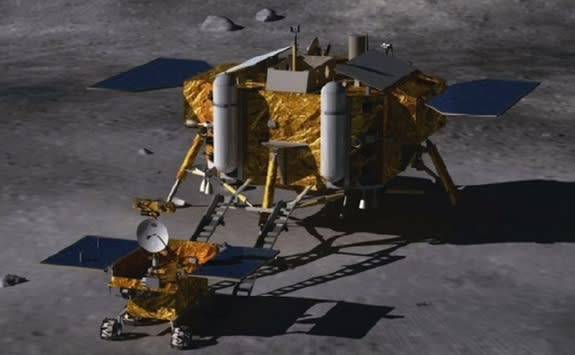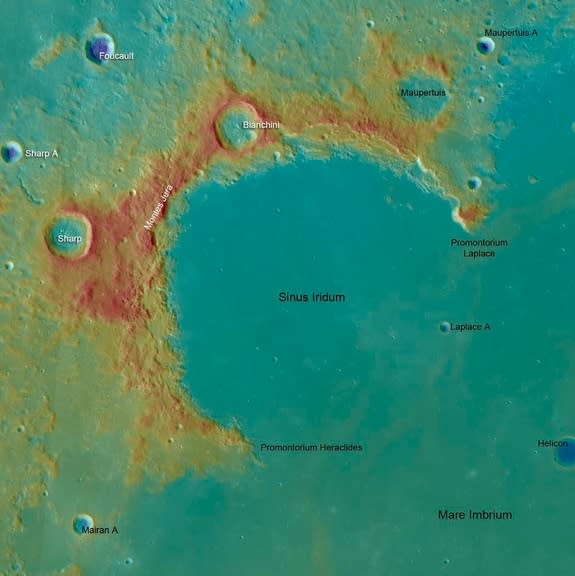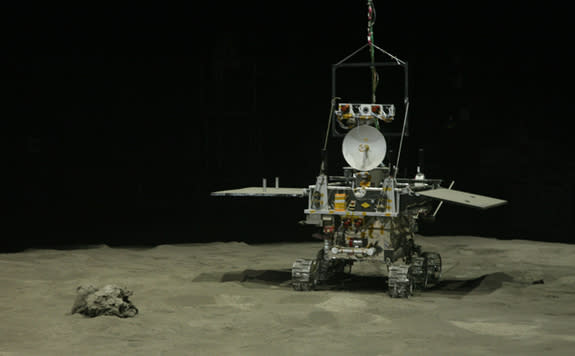China Will Launch Its 1st Moon Rover, 'Jade Rabbit,' On Sunday
China is counting down to the launch of its first moon landing mission, a mission poised to blast off Sunday (Dec. 1) to send the country's first lunar lander and rover to Earth's nearest neighbor.
China's first moon rover is called Yutu, which means "Jade Rabbit" in Chinese, according to state media reports. It will launch with the Chang'e 3 moon lander on Sunday 12:30 p.m. EST (1730 GMT), though it will be 1:30 a.m. Monday, Dec. 2 at China's Xichang Satellite Launch Center.
If all goes well, the Chang'e 3 mission will land on the moon on Dec. 14, according the European Space Agency, which is providing mission tracking of the lander and rover for China's space agency. [See Photos of China's Yutu Moon Rover and Chang'e 3 Lander]
China's first moon rover and lander
China's Yutu rover is a six-wheel robot that weighs nearly 310 lbs (140 kilograms) and is equipped with two solar panels for power. A global online poll was used to come up with suggested names for the robot. In the final round of voting, about 650,000 people out of more than 3.4 million chose Yutu.
"Yutu is a symbol of kindness, purity and agility, and is identical to the moon rover in both outlook and connotation. Yutu also reflects China's peaceful use of space," said Li Benzheng, deputy commander-in-chief of China's lunar program. Li announced the name at a press conference in Beijing on Tuesday (Nov. 26).
Yutu is a pet rabbit that travels with the goddess Chang’e to the moon in Chinese legends. China has named each of its three moon missions so far after Chang'e.
If all goes well, the Chang'e 3 mission will mark the first time a Chinese spacecraft has soft-landed on the surface of an extraterrestrial body. The spacecraft's landing, if successful, would also mark the first soft lunar landing since the former Soviet Union's Luna 24 sample return mission in 1976.
A new moon exploration phase
China's Yutu rover onboard the Chang'e 3 lunar lander is scheduled to land on the moon in mid-December. Once deployed, the robot can explore the surface for three months, according to mission descriptions.
The moon robot reflects a shift into the second phase of China's lunar exploration program, a step-by-step agenda that entails orbiting and landing probes, followed by the return to Earth of lunar samples.
China's Chang'e 1 and Chang'e 2 moon orbiter missions launched in 2007 and 2010, respectively. The country expects to have a robotic spacecraft return lunar samples to Earth by 2020.
As the countdown draws closer for liftoff of Chang'e 3 atop a Long March 3B rocket— reportedly modified with new technologies and improved reliability — there is caution being added by Chinese space officials: the voyage to the moon is risky business.
"More than 80 percent of the technology adopted in the mission is new, and with new technology and products carrying out new tasks, there are certainly great risks," said Li, as reported in China Daily. "It could be a trying process for the rover to move down the lander," he said.
Li said that to ensure the success of this mission, tracking and control networks have been set up in areas including China’s northwestern Xinjiang Uygur autonomous region and northeastern Heilongjiang province. Their capabilities, he said, are close to the current world standard.
Target: Bay of Rainbows?
It is believed that the Chang'e 3 lander will set down on the moon's Sinus Iridum, known as the Bay of Rainbows, a plain of basaltic lava on the moon.
The region is a great place to rove, said Mark Robinson of Arizona State University's School of Earth and Space Exploration and pri Lunar Reconnaissance Orbiter Camera (LROC) Principal Investigator on NASA's Lunar Reconnaissance Orbiter.
Robinson told SPACE.com that the exact landing spot for China's lander has not officially been announced, but it seems likely the touchdown spot will take place in Sinus Iridum, near the fresh crater Laplace A, a feature 5 miles (8 kilometers) in diameter.
The powerful Lunar Reconnaissance Orbiter Camera is expected to target Chang'e 3 on the moon surface. The camera has easily identified previous lunar landers and Apollo landing sites.
Robinson said in an earlier SPACE.com interview that "it will be fun to watch the rover move away from the lander, perhaps heading to Laplace A, which is a very spectacular crater."
Leonard David has been reporting on the space industry for more than five decades. He is former director of research for the National Commission on Space and is co-author of Buzz Aldrin's new book "Mission to Mars – My Vision for Space Exploration" published by National Geographic. Follow us @Spacedotcom, Facebook and Google+. Original article on SPACE.com.
Copyright 2013 SPACE.com, a TechMediaNetwork company. All rights reserved. This material may not be published, broadcast, rewritten or redistributed.





